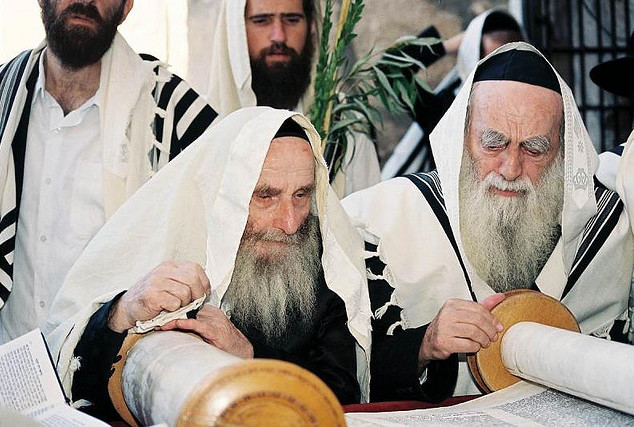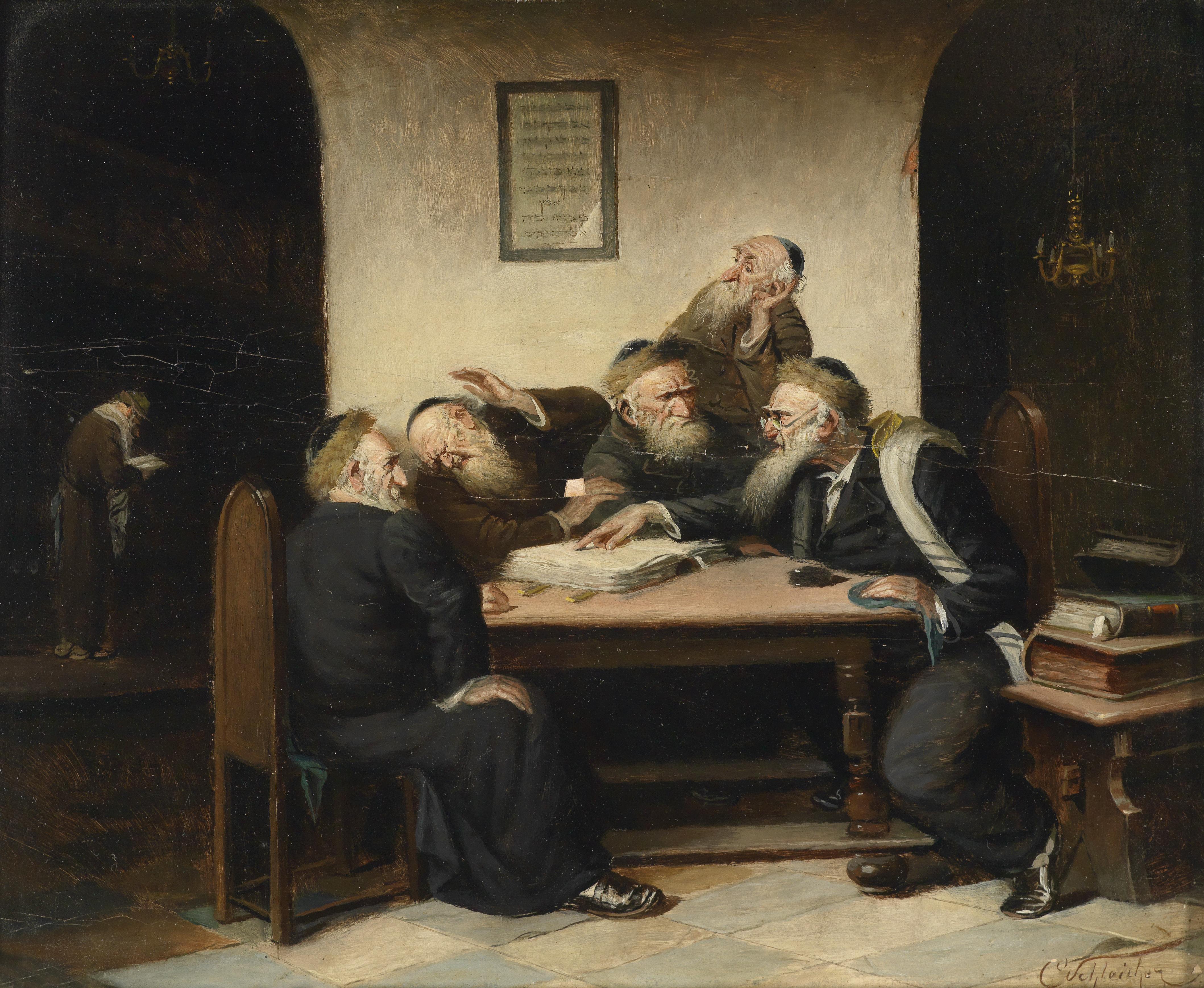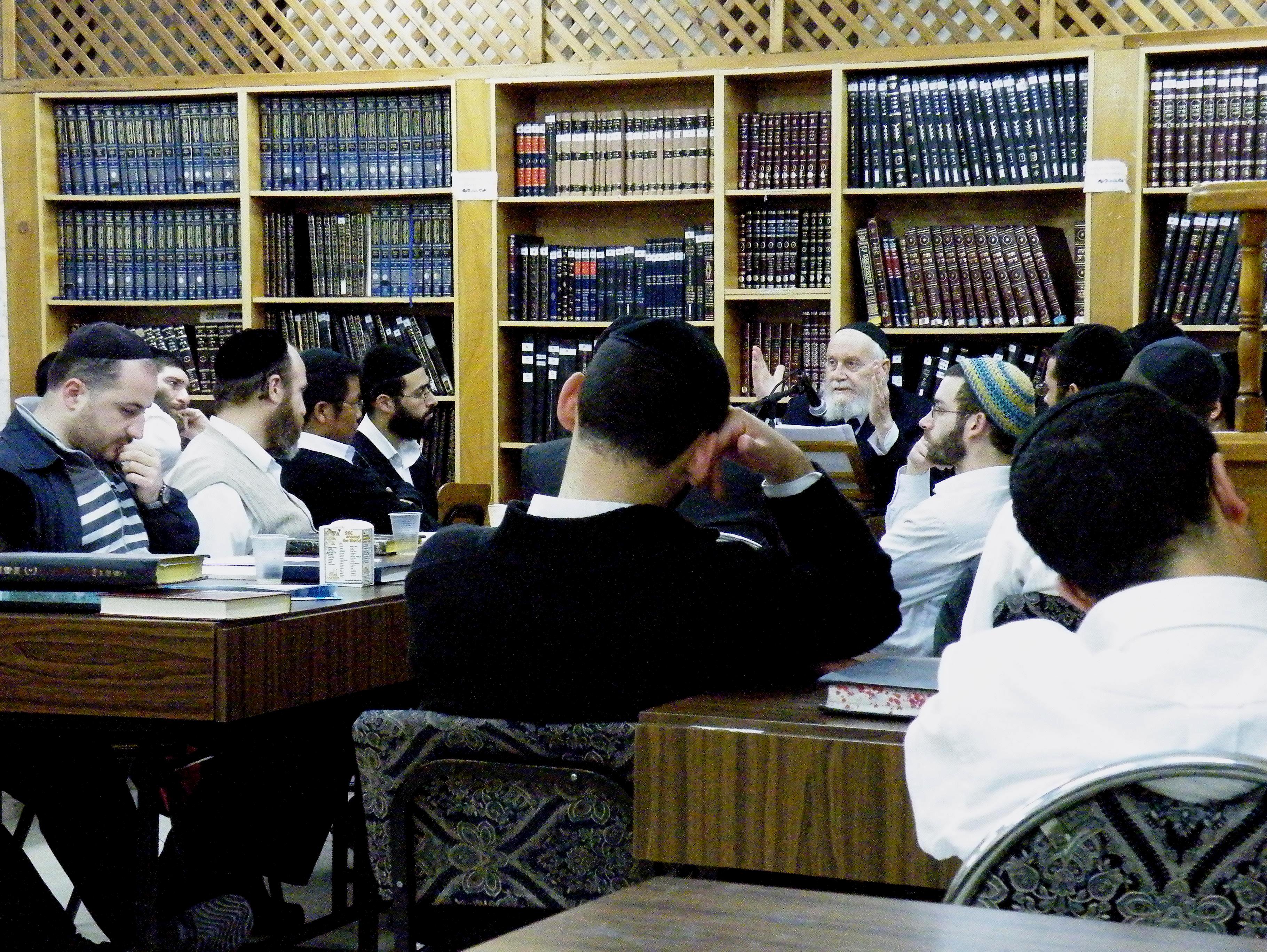|
Aharon Yehuda Leib Shteinman
Aharon Yehuda Leib Shteinman ( he, אהרן יהודה לייב שטינמן), also Shtainman or Steinman (November 3, 1914 – December 12, 2017), was a Haredi rabbi in Bnei Brak, Israel. Following the death of Yosef Shalom Elyashiv in 2012, he was widely regarded as the Gadol HaDor (Leader of the Generation), the leader of the non-Hasidic Lithuanian Haredi Jewish world. Along with several other rabbis, Shteinman is credited with reviving and expanding the appeal of European-style yeshivas in Israel. Early life Aharon Yehuda Leib Shteiman was born in Kamyenyets (Kaminetz), the son of Noach Tzvi and Gittel Faiga, and raised in Brest (Brisk), then part of the Russian Empire. He studied in Yeshivas Toras Chessed in Brest, headed by a rabbi known as the Imrei Moshe. He attended ''shiurim'' (Torah lectures) given by Yitzchok Zev Soloveitchik (the Brisker Rav). He also studied in Kletzk under Aharon Kotler. Upon reaching draft age in 1937, Shteinman was subject to the Polish dra ... [...More Info...] [...Related Items...] OR: [Wikipedia] [Google] [Baidu] |
Haredi Judaism
Haredi Judaism ( he, ', ; also spelled ''Charedi'' in English; plural ''Haredim'' or ''Charedim'') consists of groups within Orthodox Judaism that are characterized by their strict adherence to ''halakha'' (Jewish law) and traditions, in opposition to modern values and practices. Its members are usually referred to as ultra-Orthodox in English; however, the term "ultra-Orthodox" is considered pejorative by many of its adherents, who prefer terms like strictly Orthodox or Haredi. Haredi Jews regard themselves as the most religiously authentic group of Jews, although other movements of Judaism disagree. Some scholars have suggested that Haredi Judaism is a reaction to societal changes, including political emancipation, the ''Haskalah'' movement derived from the Enlightenment, acculturation, secularization, religious reform in all its forms from mild to extreme, the rise of the Jewish national movements, etc. In contrast to Modern Orthodox Judaism, followers of Haredi Judaism ... [...More Info...] [...Related Items...] OR: [Wikipedia] [Google] [Baidu] |
The Economist
''The Economist'' is a British weekly newspaper printed in demitab format and published digitally. It focuses on current affairs, international business, politics, technology, and culture. Based in London, the newspaper is owned by The Economist Group, with its core editorial offices in the United States, as well as across major cities in continental Europe, Asia, and the Middle East. In 2019, its average global print circulation was over 909,476; this, combined with its digital presence, runs to over 1.6 million. Across its social media platforms, it reaches an audience of 35 million, as of 2016. The newspaper has a prominent focus on data journalism and interpretive analysis over original reporting, to both criticism and acclaim. Founded in 1843, ''The Economist'' was first circulated by Scottish economist James Wilson to muster support for abolishing the British Corn Laws (1815–1846), a system of import tariffs. Over time, the newspaper's coverage expanded further into ... [...More Info...] [...Related Items...] OR: [Wikipedia] [Google] [Baidu] |
Torah Study
Torah study is the study of the Torah, Hebrew Bible, Talmud, responsa, rabbinic literature, and similar works, all of which are Judaism's Sifrei kodesh, religious texts. According to Rabbinic Judaism, the study is done for the purpose of the ''mitzvah'' ("commandment") of Torah study itself. This practice is present to an extent in all religious branches of Judaism, and is considered of paramount importance among religious Jews. Torah study has evolved over the generations, as lifestyles changed and also as new texts were written. Traditional view In rabbinic literature, a heavy emphasis is placed on Torah study for Jews, Jewish males, with women being exempt. This literature teaches an eagerness for such study and a thirst for knowledge that expands beyond the text of the Tanakh to the entire Oral Torah. Some examples of traditional religious teachings: * The study of Torah is "equal to all" of the ''Mitzvah, mitzvot'' of Honour thy father and thy mother, honouring one's pare ... [...More Info...] [...Related Items...] OR: [Wikipedia] [Google] [Baidu] |
Montreux
Montreux (, , ; frp, Montrolx) is a Swiss municipality and town on the shoreline of Lake Geneva at the foot of the Alps. It belongs to the district of Riviera-Pays-d'Enhaut in the canton of Vaud in Switzerland, and has a population of approximately 26,433, with about 85,000 in the agglomeration Vevey-Montreux as 2019. Located in the centre of a region named ''Riviera'' (french: Riviera vaudoise), Montreux has been an important tourist destination since the 19th century due to its mild climate. The region includes numerous Belle Époque palaces and hotels near the shores of Lake Geneva. Montreux railway station is a stop on the Simplon Railway and is a mountain railway hub. History The earliest settlement was a Late Bronze Age village at Baugy. Montreux lies on the north east shore of Lake Geneva at the fork in the Roman road from Italy over the Simplon Pass, where the roads to the Roman capital of Aventicum and the road into Gaul through Besançon separated. This made it an i ... [...More Info...] [...Related Items...] OR: [Wikipedia] [Google] [Baidu] |
Chaim Soloveitchik
Chaim (Halevi) Soloveitchik (Yiddish: חיים סאָלאָווייטשיק, pl, Chaim Sołowiejczyk), also known as Reb Chaim Brisker (1853 – 30 July 1918), was a rabbi and Talmudic scholar credited as the founder of the popular Brisker approach to Talmudic study within Judaism. He is also a member of the Soloveitchik dynasty, as the son of the Beis HaLevi. He is also known as the Gra"ch (Hebrew: גר״ח), an abbreviation of "HaGaon Reb Chaim." Biography Soloveitchik was born in Volozhin on March 25, 1853, where his father, Rabbi Yosef Dov Soloveitchik served as a lecturer in the famous Volozhiner Yeshiva. Prior to his birth, Soloveitchik's father was passed for the position of ''Rosh yeshiva'' at the Volozhiner Yeshiva, in favor of Naftali Tzvi Yehuda Berlin in 1854, ultimately resulting in their family moving away from Volozhin. After a few years, his father was appointed as a rabbi in Slutzk, where young Chaim was first educated. While still a youngster, his genius ... [...More Info...] [...Related Items...] OR: [Wikipedia] [Google] [Baidu] |
Moshe Soloveitchik (Zurich)
Rabbi Moshe Mordechai Soloveitchik, also known as the Swiss Gadol, was a prominent Haredi rabbi who lived in Switzerland. He served as a ''rosh yeshiva'' in Lugano and Lucerne before moving to Zurich, where he was recognized as one of the leaders of European Jewry. Early life Rabbi Soloveitchik was born on September 21, 1914 (the second day of Rosh Hashanah), to Rabbi Yisrael Gershon and Chaya Miriam Soloveitchik. His father was the son of Rabbi Chaim Soloveitchik of Brest, Belarus, Brisk. Growing up in Brisk, Moshe was friends with Aharon Leib Shteinman (who years later would be recognized as the Gadol#Usage, Gadol Hador). They both attended Yeshivas Toras Chesed of Brisk, which was led by Rabbi Moshe Sokolovski , author of the ''Imrei Moshe''. After Sokolovski passed away in 1931 without any children, a dispute erupted in the yeshiva over who should succeed him. Moshe and Aharon Leib both left the yeshiva at that point because of the internal strife, Aharon Leib to Slutsk-K ... [...More Info...] [...Related Items...] OR: [Wikipedia] [Google] [Baidu] |
First World War
World War I (28 July 1914 11 November 1918), often abbreviated as WWI, was one of the deadliest global conflicts in history. Belligerents included much of Europe, the Russian Empire, the United States, and the Ottoman Empire, with fighting occurring throughout Europe, the Middle East, Africa, the Pacific, and parts of Asia. An estimated 9 million soldiers were killed in combat, plus another 23 million wounded, while 5 million civilians died as a result of military action, hunger, and disease. Millions more died in genocides within the Ottoman Empire and in the 1918 influenza pandemic, which was exacerbated by the movement of combatants during the war. Prior to 1914, the European great powers were divided between the Triple Entente (comprising France, Russia, and Britain) and the Triple Alliance (containing Germany, Austria-Hungary, and Italy). Tensions in the Balkans came to a head on 28 June 1914, following the assassination of Archduke Franz Ferdina ... [...More Info...] [...Related Items...] OR: [Wikipedia] [Google] [Baidu] |
Second Polish Republic
The Second Polish Republic, at the time officially known as the Republic of Poland, was a country in Central Europe, Central and Eastern Europe that existed between 1918 and 1939. The state was established on 6 November 1918, before the end of the First World War. The Second Republic ceased to exist in 1939, when Invasion of Poland, Poland was invaded by Nazi Germany, the Soviet Union and the Slovak Republic (1939–1945), Slovak Republic, marking the beginning of the European theatre of World War II, European theatre of the Second World War. In 1938, the Second Republic was the sixth largest country in Europe. According to the Polish census of 1921, 1921 census, the number of inhabitants was 27.2 million. By 1939, just before the outbreak of World War II, this had grown to an estimated 35.1 million. Almost a third of the population came from minority groups: 13.9% Ruthenians; 10% Ashkenazi Jews; 3.1% Belarusians; 2.3% Germans and 3.4% Czechs and Lithuanians. At the same time, a ... [...More Info...] [...Related Items...] OR: [Wikipedia] [Google] [Baidu] |
Aharon Kotler
Aharon Kotler (1892–1962) was an Orthodox Jewish rabbi and a prominent leader of Orthodox Judaism in Lithuania and the United States; the latter being where he founded Beth Medrash Govoha in Lakewood Township, New Jersey. Early life Kotler was born Aharon Pines in Śvisłač, Russian Empire (historically Lithuania, now Belarus) in 1891. He was orphaned at the age of 10 and adopted by his uncle, Rabbi Yitzchak Pines, a Dayan (rabbinic judge), Dayan in Minsk. He studied in the Yeshivas Knesses Yisrael (Slabodka), Slabodka yeshiva in Lithuania under the "Alter (elder) of Slabodka", Rav Nosson Tzvi Finkel (Slabodka), Nosson Tzvi Finkel, and Rabbi Moshe Mordechai Epstein. Subsequently, he joined his father-in-law, Rabbi Isser Zalman Meltzer, to run the yeshiva of Slutsk. World War II and move to the United States After World War I, the yeshivah moved from Slutsk to Kletsk in Belarus. With the outbreak of World War II, Kotler and the yeshivah relocated to Vilnius, Vilna, then the ... [...More Info...] [...Related Items...] OR: [Wikipedia] [Google] [Baidu] |
Slutsk-Kletsk Yeshiva
Mesivta Rabsa Eitz Chaim DiSlutsk ( he, מתיבתא רבתא עץ חיים דסלאצק), colloquially known as the Slutsk-Kletsk Yeshivah was an Orthodox Jewish yeshiva in Europe, founded in Slutsk, then part of the Russian Empire, and later moved to Kletsk in the Second Polish Republic, in 1897. The yeshiva was founded by the Ridvaz and famously led by Rabbi Isser Zalman Meltzer and Rabbi Aharon Kotler. Slutsk years The yeshiva was founded in 1897 by Rabbi Yaakov Dovid Willovsky, known as the Ridvaz, who was the rabbi of Slutsk, in an effort to combat the influence of the maskilim in his town. He asked Rabbi Nosson Tzvi Finkel (the Alter of Slabodka), who was the rosh yeshiva of the Slabodka Yeshiva, to send him students to start off the yeshiva. The Alter immediately selected fourteen of his top students to go to Slutsk. Among the group were Rabbi Isser Zalman Meltzer, who would become the rosh yeshiva; Rabbi Pesach Pruskin; Rabbi Eliezer Yehuda Finkel; Rabbi Reuven Katz; R ... [...More Info...] [...Related Items...] OR: [Wikipedia] [Google] [Baidu] |
Yitzchok Zev Soloveitchik
Yitzchok Zev Halevi Soloveitchik (Hebrew: יצחק זאב הלוי סולובייצ'יק), also known as Velvel Soloveitchik ("Zev" means "wolf" in Hebrew, and "Velvel" is the diminutive of "wolf" in Yiddish) or the Brisker Rov ("rabbi of/from Brisk", (19 October 1886 – 11 October 1959), was an Orthodox rabbi and rosh yeshiva of the Brisk yeshiva in Jerusalem. A scion of the Soloveitchik rabbinical dynasty, he is commonly referred to as the "GRY"Z" (an acronym for Gaon Rabbi Yitzchok Zev) and "The Rov". He was known for his stringency in halakha (Jewish law) and advocacy for non-participation in the Israeli political system. Biography Yitzchok Zev Soloveitchik was born to Chaim Soloveitchik in Valozhyn. On his mother's side, he was the grandson of Refael Shapiro, a rosh yeshiva in the Volozhin yeshiva. Soloveitchik moved with his family the Jewish community of Brisk after the czarist government closed the Volozhin yeshiva. He would succeed his father as a rabbi of B ... [...More Info...] [...Related Items...] OR: [Wikipedia] [Google] [Baidu] |
Shiur (Torah)
Shiur (, , lit. ''amount'', pl. shiurim ) is a lecture on any Torah topic, such as Gemara, Mishnah, Halakha (Jewish law), Tanakh (Bible), etc. History The Hebrew term שיעור ("designated amount") came to refer to a portion of Judaic text arranged for study on a particular occasion, such as a yartzeit, the dedication of a new home, or the evening of a holiday, and then to a public reading and explanation of the same. The act of teaching and studying these texts at the designated time was known in Yiddish as ''schiur lernen''. These shiurim would be attended by all classes of people; it was traditional for learned attendees to engage the lecturer in continuous discussion, and for the larger lay audience to listen intently. Concurrently, the word came to refer to the daily study quotient for students of a yeshiva, and then to the lecture given thereon. Akiva Eger, for example,would not miss learning a single ''shiur'' with the yeshiva. His ''shiurim'' with them were ... [...More Info...] [...Related Items...] OR: [Wikipedia] [Google] [Baidu] |






